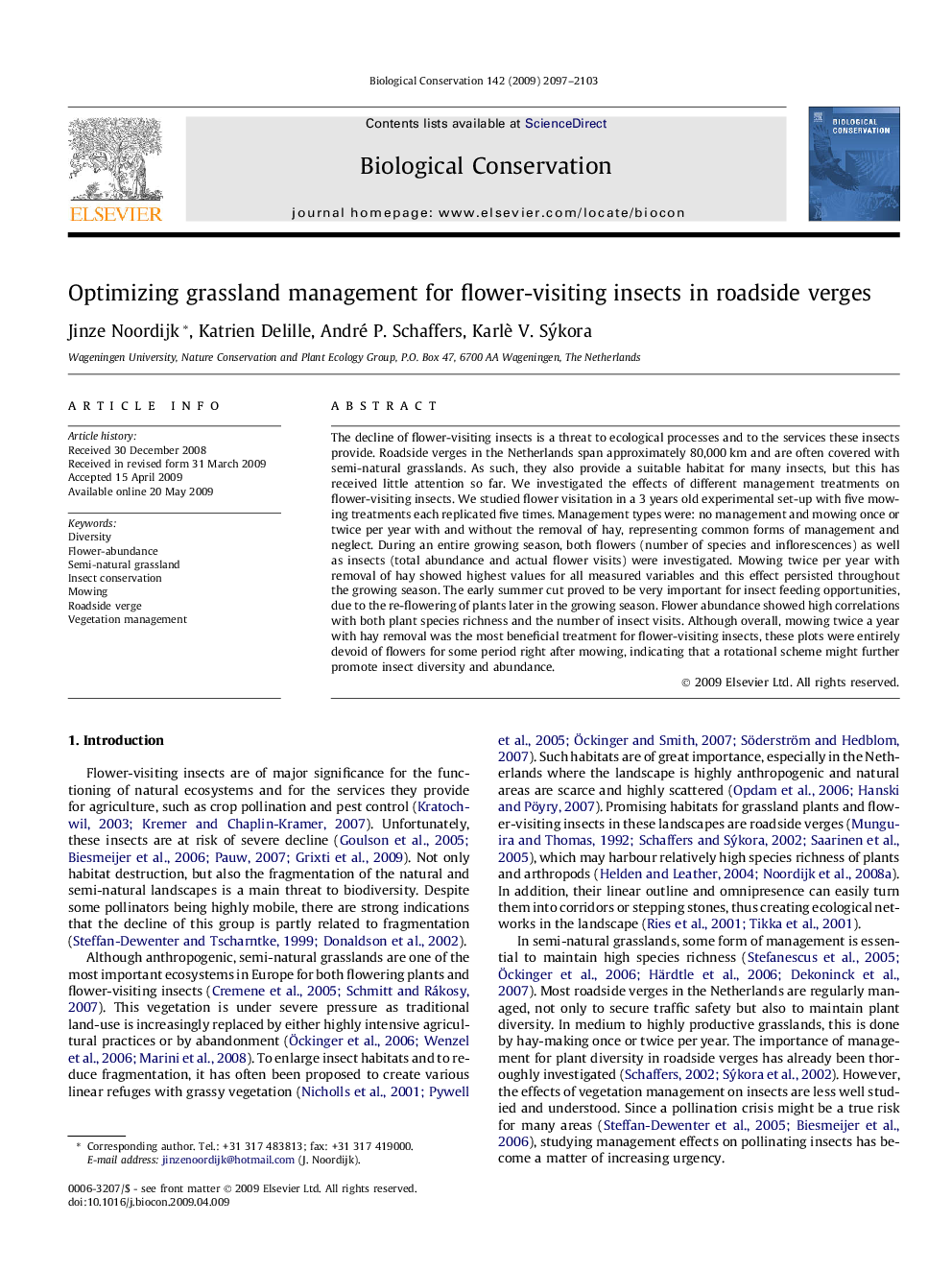| Article ID | Journal | Published Year | Pages | File Type |
|---|---|---|---|---|
| 4386205 | Biological Conservation | 2009 | 7 Pages |
The decline of flower-visiting insects is a threat to ecological processes and to the services these insects provide. Roadside verges in the Netherlands span approximately 80,000 km and are often covered with semi-natural grasslands. As such, they also provide a suitable habitat for many insects, but this has received little attention so far. We investigated the effects of different management treatments on flower-visiting insects. We studied flower visitation in a 3 years old experimental set-up with five mowing treatments each replicated five times. Management types were: no management and mowing once or twice per year with and without the removal of hay, representing common forms of management and neglect. During an entire growing season, both flowers (number of species and inflorescences) as well as insects (total abundance and actual flower visits) were investigated. Mowing twice per year with removal of hay showed highest values for all measured variables and this effect persisted throughout the growing season. The early summer cut proved to be very important for insect feeding opportunities, due to the re-flowering of plants later in the growing season. Flower abundance showed high correlations with both plant species richness and the number of insect visits. Although overall, mowing twice a year with hay removal was the most beneficial treatment for flower-visiting insects, these plots were entirely devoid of flowers for some period right after mowing, indicating that a rotational scheme might further promote insect diversity and abundance.
